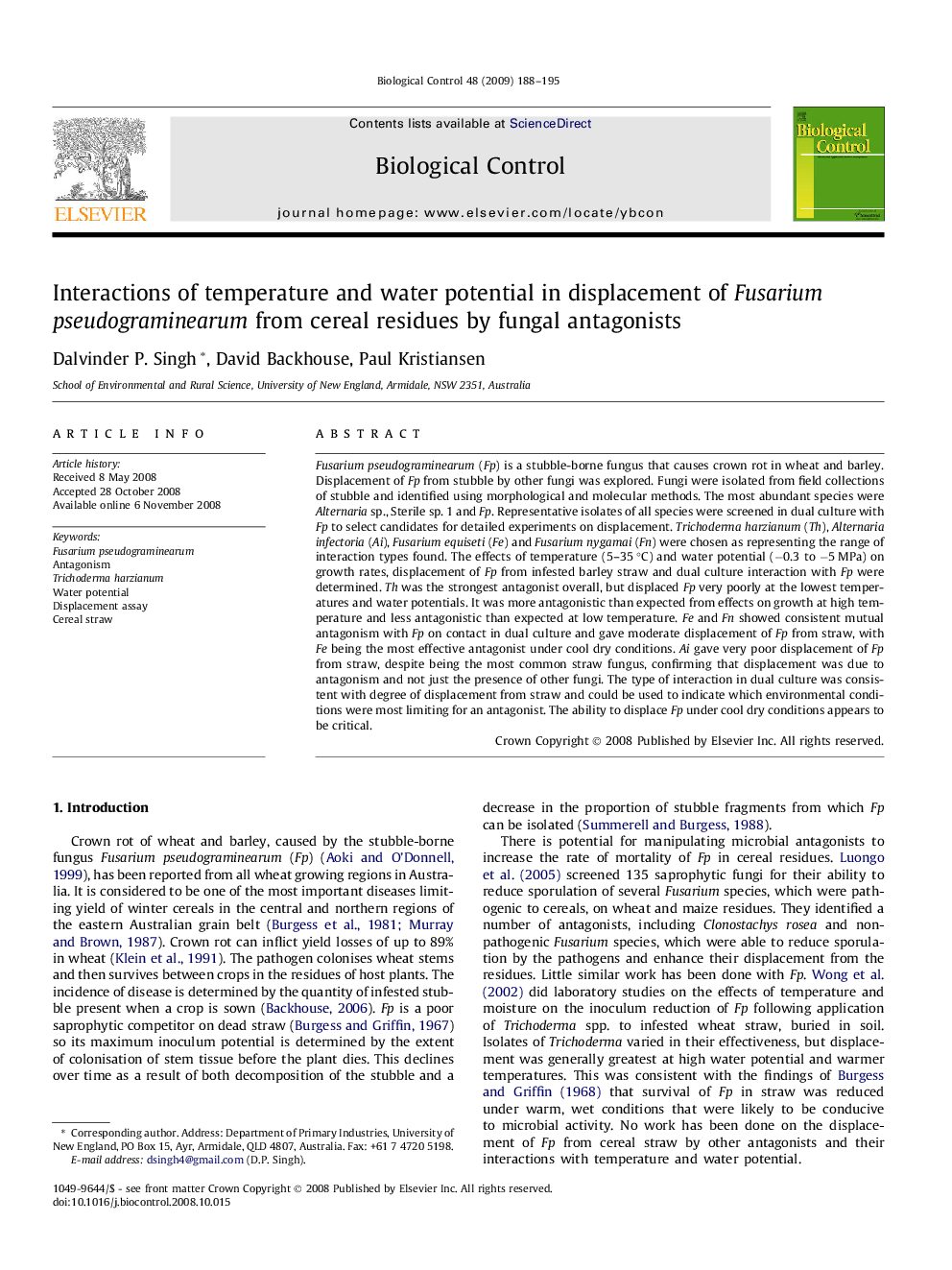| Article ID | Journal | Published Year | Pages | File Type |
|---|---|---|---|---|
| 4504701 | Biological Control | 2009 | 8 Pages |
Abstract
Fusarium pseudograminearum (Fp) is a stubble-borne fungus that causes crown rot in wheat and barley. Displacement of Fp from stubble by other fungi was explored. Fungi were isolated from field collections of stubble and identified using morphological and molecular methods. The most abundant species were Alternaria sp., Sterile sp. 1 and Fp. Representative isolates of all species were screened in dual culture with Fp to select candidates for detailed experiments on displacement. Trichoderma harzianum (Th), Alternaria infectoria (Ai), Fusarium equiseti (Fe) and Fusarium nygamai (Fn) were chosen as representing the range of interaction types found. The effects of temperature (5-35 °C) and water potential (â0.3 to â5 MPa) on growth rates, displacement of Fp from infested barley straw and dual culture interaction with Fp were determined. Th was the strongest antagonist overall, but displaced Fp very poorly at the lowest temperatures and water potentials. It was more antagonistic than expected from effects on growth at high temperature and less antagonistic than expected at low temperature. Fe and Fn showed consistent mutual antagonism with Fp on contact in dual culture and gave moderate displacement of Fp from straw, with Fe being the most effective antagonist under cool dry conditions. Ai gave very poor displacement of Fp from straw, despite being the most common straw fungus, confirming that displacement was due to antagonism and not just the presence of other fungi. The type of interaction in dual culture was consistent with degree of displacement from straw and could be used to indicate which environmental conditions were most limiting for an antagonist. The ability to displace Fp under cool dry conditions appears to be critical.
Keywords
Related Topics
Life Sciences
Agricultural and Biological Sciences
Agronomy and Crop Science
Authors
Dalvinder P. Singh, David Backhouse, Paul Kristiansen,
